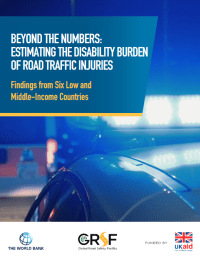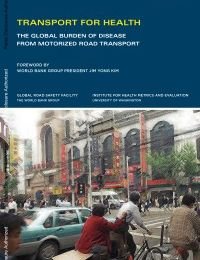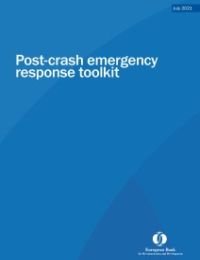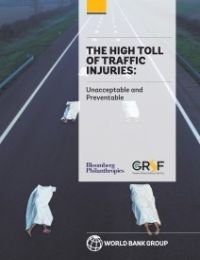Publications
1-4 of 4
-
Post-Crash Health Care
Beyond the Numbers: Estimating the Disability Burden of Road Traffic Injuries
November 2023
-
Post-Crash Health Care
Transport for Health: The Global Burden of Disease from Motorized Road Transport
August 2021
-
- reasons for taking action
- the main elements of post-crash response
- examples of best practice
- helpful resources.
- government departments and policymakers
- local and regional government
- emergency service managers and professionals
- paramedics and community responders
- laypeople and members of the community
- crash survivors, families, and organizations representing them.
-
-
Cutting traffic deaths and injuries by half could add 7 to 22% to GDP per capita over 24 years in select countries
-
Welfare benefits equivalent to 6 to 32% of GDP per capita could be realized over the same period if traffic deaths and injuries were halved
-
Road traffic injuries are the single largest cause of mortality and long-term disability among people aged 15-29, prime working age
-
Reducing the number of RTIs leads to long-term national income growth. This correlation is easy to establish as RTIs are the single largest cause of mortality and long-term disability among young people aged 15-29 (prime working age).
-
Significant long-term income growth—7 to 22% increase in GDP per capita over 24 years—can be achieved by halving road traffic deaths and injuries, in line with the current UN targets.
-
The study goes beyond productivity or economic gains, and highlights the broader welfare benefits associated with reducing road traffic mortality and morbidity, adding years of life free of injuries and lasting disabilities. This recognizes that GDP is an imperfect measure of social welfare, as it does not factor health benefits. The study finds welfare benefits equivalent to 6 to 32% of the national GDP can be realized from reducing road deaths and injuries by 50% over 24 years.
-
By maximizing healthy years of life, free of injuries and disabilities, actions to reduce road traffic injuries can help countries increase productivity, enhance the well-being of their populations, and build human capital—a key developmental priority for the World Bank.
-
Road safety goes beyond the transport sector, with a direct impact on public health, societies, and economies. Likewise, because road safety is an inherently cross-sectoral issue, real progress can only happen if all relevant stakeholders unite their efforts.
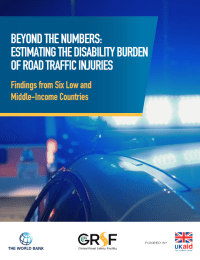
It is well-documented that road crashes claim around 1.35 million lives each year and rank as the eighth leading cause of death globally, causing huge burdens for economies, health systems, and transport networks. However, beneath the sobering fatality statistics lies a largely unexplored landscape: the staggering toll of disabilities induced by road crashes. Until now, the focus of road safety research and policy discourse has predominantly revolved around fatalities, which has limited our understanding of traffic-related injuries and disability burdens at the individual, community, and national level.
To address this critical knowledge gap, this pioneering study—involving over 2,300 patients hospitalized for road crash injuries—provides valuable insights into the prevalence, causes, and long-term impacts of crash-related disabilities. By broadening the discussion beyond fatalities to the often-overlooked issue of disability, the report paves the way for a more holistic perspective on road safety impacts, which can inform more effective road safety policies.
This report is a call to action for comprehensive and context-specific interventions that encompass both the transport and health sectors. Effective measures may include implementing safety regulations, enhancing emergency services, strengthening rehabilitative care, and expanding social safety nets to ease the financial burden on crash survivors. Collaborative efforts between governments, global and regional organizations, civil society, and other stakeholders will be indispensable.

This report summarizes the findings of a long and meticulous journey of data gathering and analysis to quantify the health losses from road deaths and injuries worldwide, as part of the path-finding Global Burden of Disease (GBD) study. It is important, first, to acknowledge the profound contribution made by the lead authors and global team of injury prevention professionals to estimate the disease burden of road trauma, before absorbing their findings and recommendations. Without their dedication and tenacity, the way forward would be less certain.
The first GBD study, published nearly two decades ago, signaled an emerging road safety crisis in developing regions of the world. It triggered a remarkable program of global advocacy that culminated in the United Nations decade of action for road safety and a global plan to bring road safety outcomes under control in these regions by 2020. However, limited investment has been mobilized so far to implement the UN initiative. The second GBD studies, and related analyses presented in this report, confirm the importance of road safety as a global development priority and the urgency with which it must be addressed.
The report's findings highlight the growth in road deaths and injuries globally, and their substantial impacts on maternal and child health, despite sustained reductions over the last three to four decades in high-income countries. Combined with the deaths arising from vehicle pollution, the road transport death toll exceeds that of, for example, HIV/AIDS, tuberculosis, malaria, or diabetes. This statistic further reinforces the call for global action. Without these GBD estimates, we would not have a clear picture of the true situation because official country data in the developing world vastly understate the scale of road transport health losses.
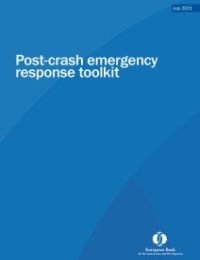
What is this toolkit?
This toolkit sets out the key elements of effective post-crash emergency response. The toolkit covers:
Who is this toolkit for?
The toolkit is for all stakeholders with an interest in post-crash response. This includes:
How to use it
The toolkit describes basic good practices for organizing an effective post-crash response. It is a starting point for dialogue and discussion, aimed at identifying goals for improving post-crash services. Every country has different structures and challenges, so the toolkit is not “one-size-fits-all.” However, certain elements of good post-crash response apply everywhere: the need for strategic planning and investment, good coordination, communication, equipment, and training.
To learn more about this project, click here.
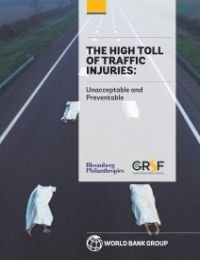
Key Findings ⌵︎
Each year, 1.25 million people lose their lives on the world’s roads and another 20 to 50 million are seriously injured. The tragic loss from a road traffic death or serious injury is compounded by the harm to households and social networks. A disproportionate 90% of road traffic injuries (RTIs) occur in low- and middle-income countries (LMICs), representing a major public health and economic burden. This is an eminently preventable problem that is critical to the development agenda. Unfortunately, due to lack of solid data, the impact of road injuries on economic growth and social welfare has been difficult to assess.
A new World Bank report funded by Bloomberg Philanthropies, The High Toll of Traffic Injuries: Unacceptable and Preventable, looks to fill the gap. It proposes a comprehensive methodology to quantify both the income growth and social welfare benefits that safer roads could bring to developing countries. The analysis is based on data collected from 135 countries over 24 years, and focuses on China, India, the Philippines, Tanzania, and Thailand—five geographically, demographically and economically diverse LMICs.
The study shows that reducing the number of RTIs in developing countries not only increases income growth, but also generates substantial welfare benefits to societies.
Key findings from the report include:
> Press Release: Road Deaths and Injuries Hold Back Economic Growth in Developing Countries

